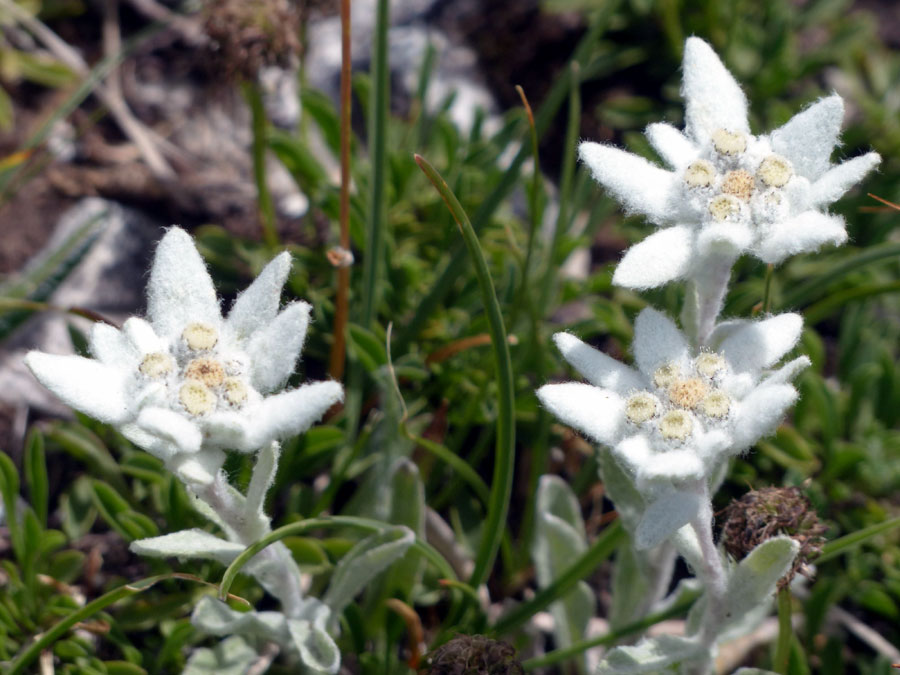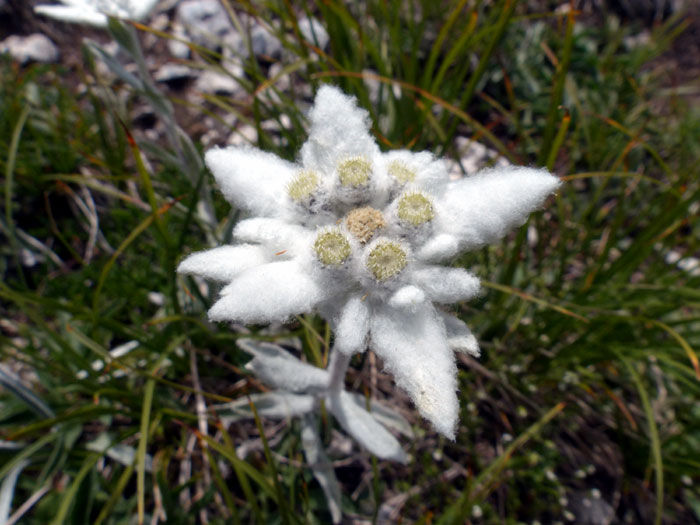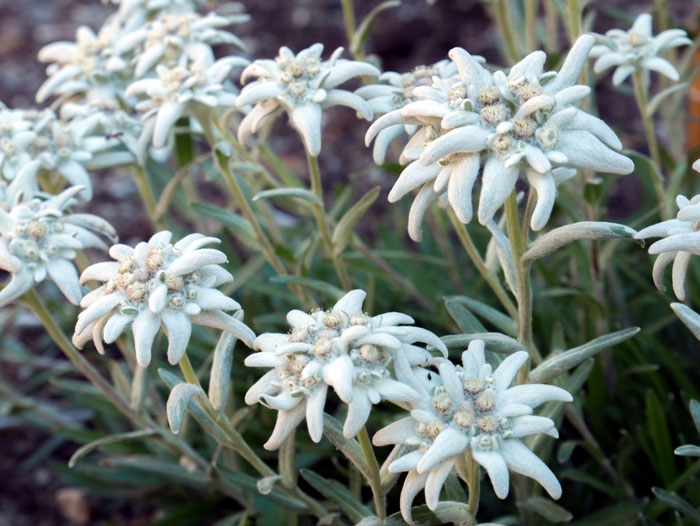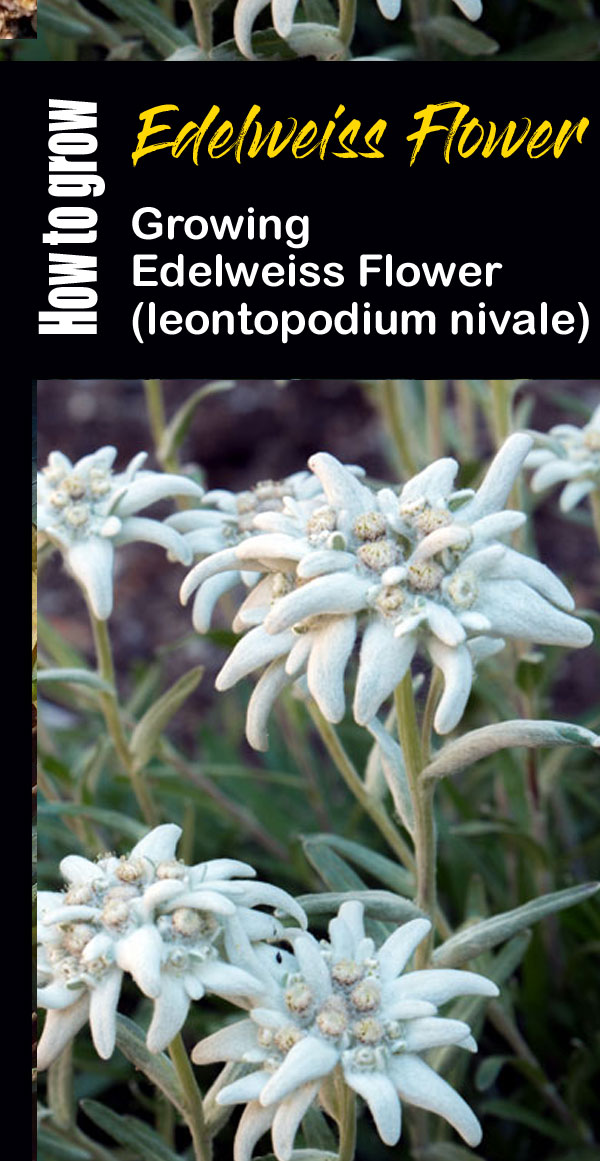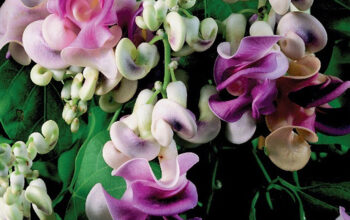Edelweiss Flower
Edelweiss (leontopodium nivale) is a star-shaped alpine plant from the Asteraceae family, and it is found along the Swiss Alps. Originally from Asia and Europe, these outdoor plants grow best in mountainous terrain at high altitudes, such as those in the Swiss and Austrian Alps. Several countries have made this flower a protected flower, including Germany, Switzerland, and France. This mountain flower can grow to a height of eight to sixteen inches and bloom from late spring to early autumn, depending on the habitat.
The white, woolly blossoms are the apparent structure of the edelweiss flower, but the blooms themselves are small, yellow, and surrounded by silvery-white leaves. On the plant, there are also edelweiss leaves that appear to be felt-textured and are a gray-green color.
Overview Edelweiss Flower
Scientific name Leontopodium nivale
Common name Edelweiss Flower
Plant type Flowering perennial plant
Sun Full sun to partial shade
Soil Well-drained with sand
Soil pH 6.5- 7.5
Flower colors White
Blooming time late spring to early autumn
Zone 4-7
How to Grow and Care Edelweiss Flower
The plants make a striking addition to a rock garden, and they can be grown from seed, depending on your climate. It is a slow-growing plant and begins to flower in the second year of growth.
Growing from seeds
It is very easy to grow edelweiss from seed. The best time to plant edelweiss outdoors is early spring, before the last frost. By exposing them to cold and moist conditions, they will be prepared to undergo cold stratification, which is the process of encouraging germination. Seeds for indoor planting should be sown in soil inside a black plastic bag and placed in the refrigerator for three weeks.
Seeds should be sown gently in well-draining soil. Be sure to mist the seeds continually to keep them moist. Store them in a cool place. They should germinate after approximately two to six weeks. Spring is a good time to plant seedlings in the garden after the last frost. Set them 4 to 12 inches apart. Edelweiss can be grown in a pot or a container as well.
Growing from Cuttings
It is possible to propagate through division. Edelweiss has a short lifespan, so it’s best to do this every few years. To loosen the roots of the edelweiss, gently dig around it in the spring. Remove it once the roots are loose. To divide the plant, use a shovel and snips to cut through the roots. Ensure each division has strong roots and healthy foliage. Place each division in an area with bright light and well-draining soil.
Sunlight
A full sunny location is best for these flowers, but they can be grown in partial shade as well. For a similar environment to what they grow in naturally, they can be planted under taller plants, so they will receive dappled sunlight as well as some protection from the elements.
Soil
The soil is the most important factor for growing edelweiss plants. A pH level of medium acidity or slightly alkaline is ideal for them. A neutral pH level of 6.5 to 7.5 is best for these plants. Prepare a mixture of equal parts sand, peat moss, and compost for container plants.
Watering
Plants that have been established rarely need water, so during the winter the plant should be completely dry. The plants naturally grow in harsh conditions, so during winter they should be completely dry. Soggy soil is not suitable for them, and they prefer to be underwater rather than overwatered. Plants will need watering once or twice a week for the first year of their growth, but they won’t need constant watering after that.
Temperature and Humidity
Plants of the Edelweiss genus are built to withstand harsh conditions, including cold temperatures, high winds, and high altitudes. Edelweiss can withstand temperatures as low as -20 degrees Fahrenheit.
A hot, humid climate is not conducive to their growth.
Fertilizer
Edelweiss is an alpine plant that grows in poor, rocky soils. It rarely needs fertilizer and often does better without it. A small dose of lime is all that is needed in the spring to ensure solid growth. Adding rock flour to potted plants makes them happy.
Pruning
Edelweiss doesn’t need pruning during the growing season. It is best to remove flower heads in autumn before they produce seeds in order to prevent self-seeding. The plant is cut just above ground level, leaving about a hand’s breadth between the plant and the ground surface. After the cut, the plant grows back robustly and compactly without producing a second bloom.
Read also:
How to grow Kale in winter. 07 most popular kalanchoe species for your garden. Snapdragons plants growing and care tips. Growing asparagus plants in home. Growing Herbs indoor. How to grow and care silver satin plant. Balloon flowers plant growing and care tips. Insulin plant chamaecostus cuspidatus fiery costus plants. Bleeding heart vine growing and care tips.
For pin

